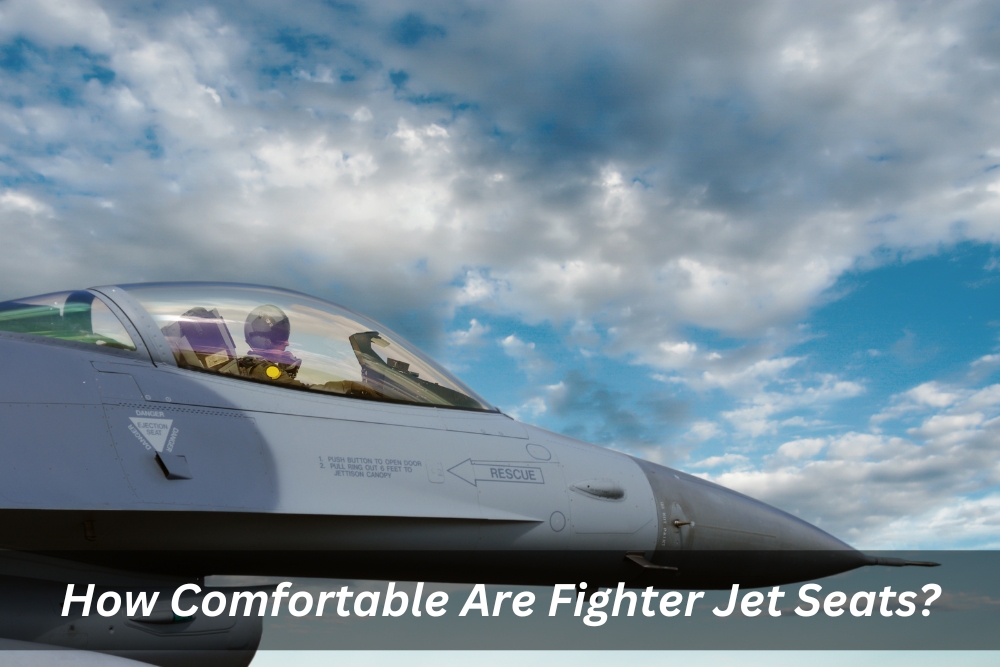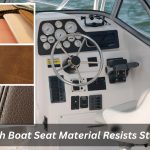How Comfortable Are Fighter Jet Seats?

If you’ve ever wondered how fighter pilots manage to stay comfortable during long flights in high-pressure situations, it all starts with the fighter jet seat. This seat is designed to meet high ergonomic standards. It also provides the necessary support and protection for pilots during flight. Militaries use fighter jet seats not only in their vehicles but also in other types of vehicle seats, such as crew seats.
This blog post will explore fighter jet seat ergonomics, the variety of seat cushion types available, and the safety systems in place for pilots to safely eject from their aircraft in an emergency. So buckle up, and let’s delve into the world of fighter jet seat technology used by the air force and other fighters.
What are the design and materials used in fighter jet seats?
When it comes to fighter jet seats, there are several systems that pilots rely on during flight. These include the Martin-Baker ejection seat, which is designed to protect the pilot in the event of an emergency situation, and the range of adjustable armrests used to help pilots maintain their balance during high G-forces. In addition, fighter jet seats also have ergonomic designs. It enables them to meet the wide range of demands placed on them by experienced pilots.
What are some of the features that make fighter jet seats comfortable?
The key to a comfortable experience in a fighter jet seat is finding the right balance between safety and comfort. Pilots need to be able to move freely and maintain good posture while also having the protection of their seat in the event of an ejection or high G-forces. To ensure this, many military aircraft are now equipped with adjustable armrests that allow for a greater range of motion and better ergonomics. Additionally, some seats offer blast protection, which helps protect pilots from the extreme pressures they may face during flight.
Finally, it’s important to consider that there is no one-size-fits-all approach when it comes to fighter jet seats. As such, every pilot has his or her own preferences when it comes to finding the most comfortable seat for flying a fighter jet. By experimenting with different configurations, pilots can determine the best way to achieve comfort while still maintaining safety.
What distinguishes the seats used in military aircraft from those in fighter jets?
When it comes to the design of military aircraft seats, they have been designed with comfort and safety in mind. Many of these seats feature adjustable lumbar support and adjustable headrests that help pilots maintain proper posture during flight. Moreover, manufacturers equip many of these seats with airbags to offer extra protection in case of an accident. They design the padding on these seats to absorb shock and vibrations, providing a more comfortable experience while still ensuring that pilots receive the necessary protection.
The seating solutions used in fighter jets are much different than those used in military aircraft. Because fighter jets demand greater maneuverability and higher G-forces, the seating solutions used must be able to withstand extreme pressures while still maintaining a comfortable fit for the pilot. As a result, these seats are typically much more rigid than those used in military aircraft. Furthermore, the designed padding absorbs a greater amount of shock and vibrations caused by the intense forces encountered during flight.
What are the comparisons between fighter jet seats and military seats?
When it comes to fighter jet seats and military seats, there are some key similarities and differences to consider.
- Both types of seats usually have an ejection system designed to safely and rapidly remove the pilot or occupant from the aircraft during an emergency, making it one of their main similarities.
However, the specifics of these ejection systems can vary depending on the type of seat. Fighter jet seats usually utilise rocket-powered ejection systems. As these seats need to be able to quickly propel the occupant out of the aircraft at high speeds. Military seats may utilise a distinct type of ejection system, more appropriate for slower aircraft or varying emergency scenarios.
- Another key difference between fighter jet seats and military seats is the level of protection that they provide. The design of fighter jet seats typically ensures a high level of protection against the extreme forces and speeds encountered during fighter jet operations. However, designers of military seats may prioritise different features.
Although there are similarities between fighter jet seats and military seats with respect to their ejection systems, designers prioritise different objectives and may utilise distinct technologies and features to satisfy the requirements of diverse aircraft and missions.
Conclusion
To sum up, fighter jet seats must meet stringent safety requirements while also providing crews with a comfortable experience. Military aircraft and fighter jets have designed seating solutions that support the movements and pressures experienced by pilots during flight to ensure their comfort and safety. By experimenting with different configurations, pilots can determine the best way to achieve comfort while still maintaining safety.
We at Sege Seats understand the importance of providing comfortable and reliable seating solutions to our customers. Our mission is to provide seats that meet the highest standards in safety, comfort, and durability for our military personnel. Contact us today to learn more about how we can help you improve your seat performance.





